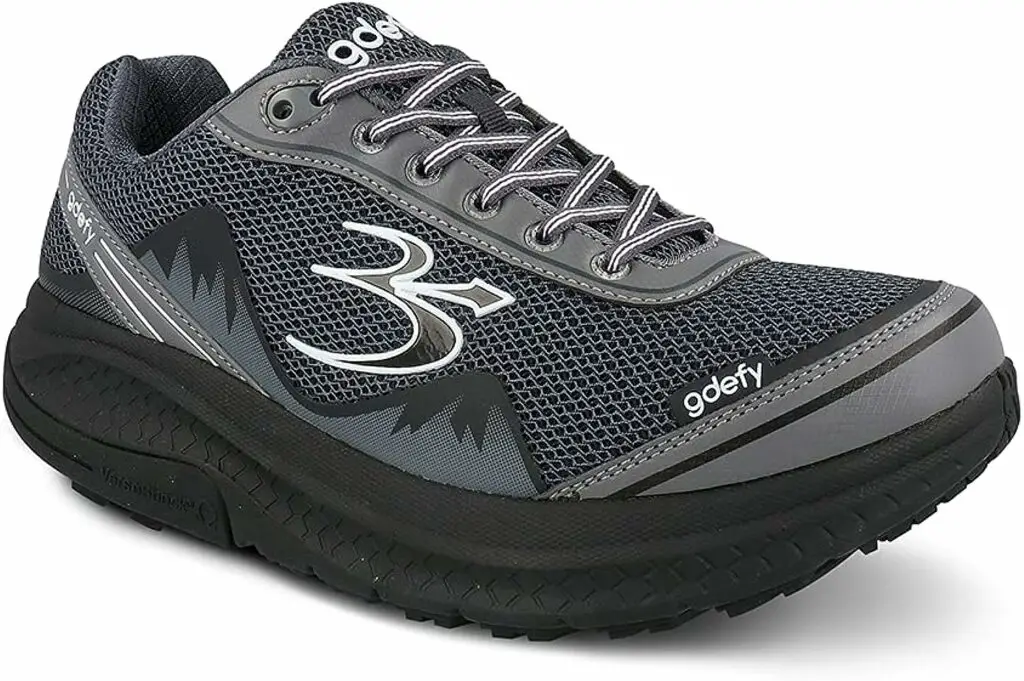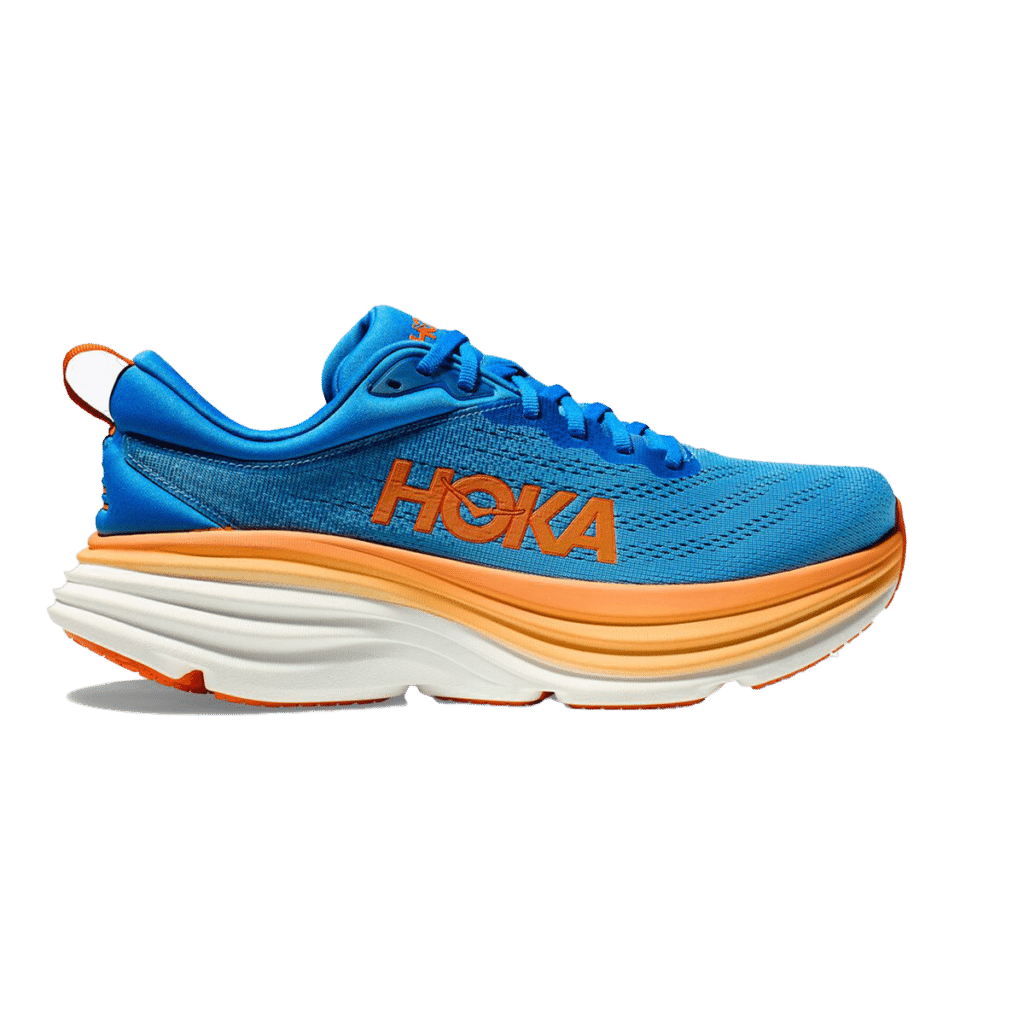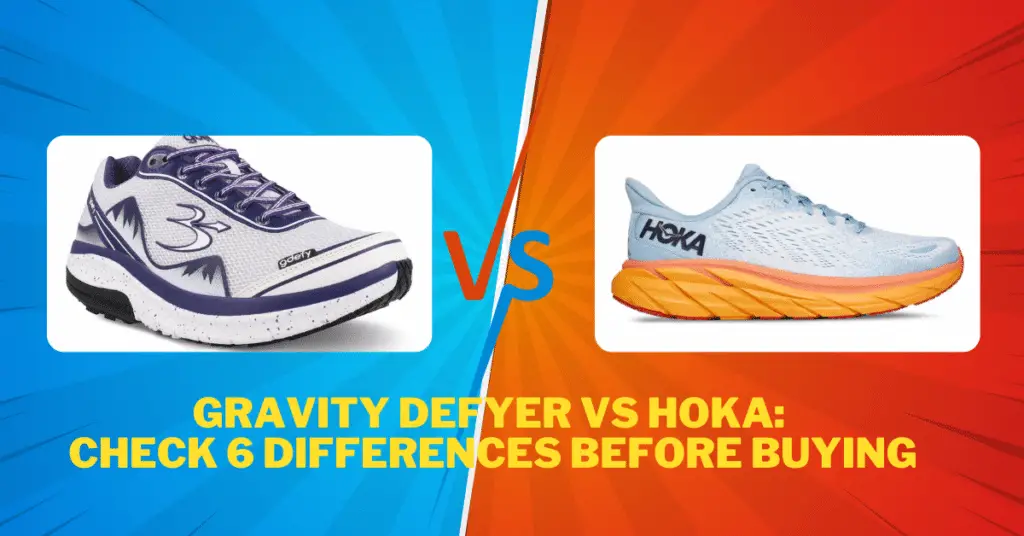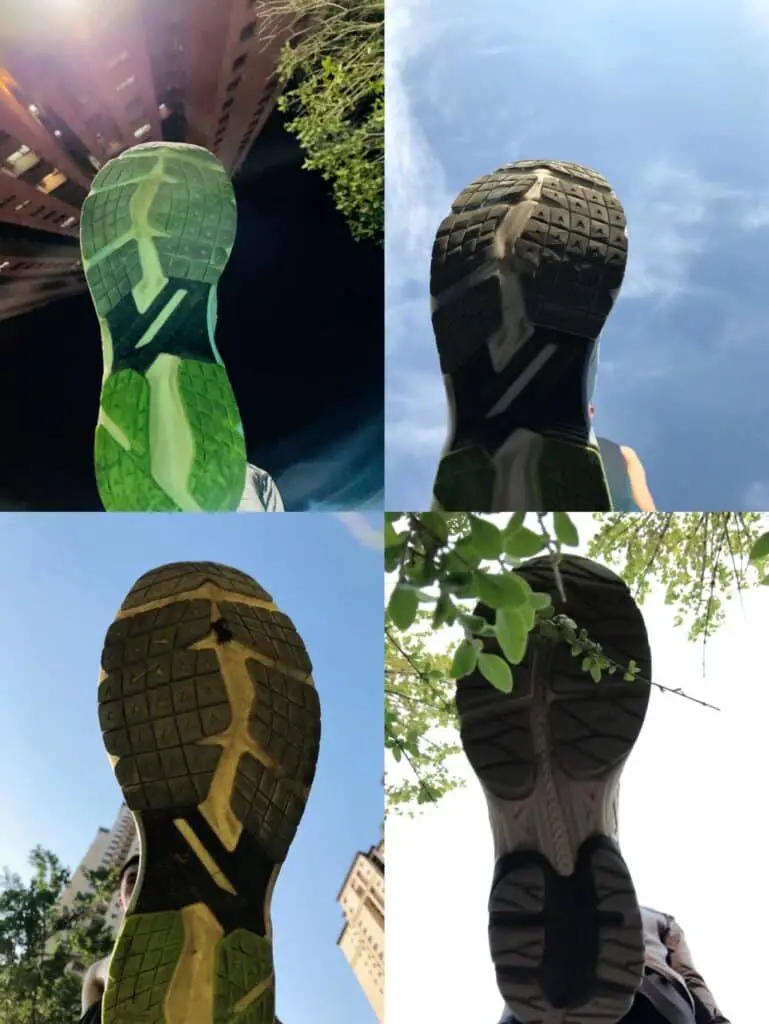Gravity Defyer vs Hoka: Check 6 Differences Before Buying
Table of Contents
When we’re talking about comfortable shoes, two brands are on the top of the list: Gravity Defyer and Hoka.
Both brands are iconic in the industry and are well-loved by the community. In fact, they’re so loved, that you could even say that they’ve developed cult followings. They both do their fair share of innovation. While the two brands may seem similar, there are actually quite a lot of differences between them.
In this article, I’ll be breaking down the major differences between Gravity Defyer and Hoka. I’ll also be teaching you more about each individual brand. So, let’s get into everything that you need to know before making your decision!
Gravity Defyer Shoes Overview
Founded in 2008, Gravity Defyer, also known as GDefy, is an American footwear brand. They are known as a leading provider of shoes with pain relief technology.

Key Technology
What sets Gravity Defyer apart is its VersoShock soles. This one-of-a-kind, shock-absorbing technology was created to reduce harsh impacts on your foot. Effectively providing pain relief for your knees, back, ankle, and foot.
This works because of their spring system. With every step, it absorbs the shock and then bounces it back. Propelling you forward and making activities easier since you’ll need less effort. You’ll find yourself feeling less fatigued and more energized to stay active.
Pros
- Joint pain relief. Whether you’ve got an aching back, ankle, knee, or foot, VersoShock Technology is proven to stop discomfort. These shoes are also recommended by podiatrists because of it.
- Increased energy return. Again, VersoShock Technology shines here are it uses absorbed impact during motion to push you forward. So you’ll feel more spry without needing extra effort.
- Smooth Heel-to-Toe transition. Their Smart Memory Master Spring and Ergonomic Rocker design allow better walking gait. The flexible spring membrane of the shoes propel you forward without feeling awkward. The Twin Stabilizers also reinforce your heels and provide greater stability by keeping your feet linear.
Cons
- Expensive price point. Most Gravity Defyers are priced between $90 – $170, making them pretty pricey.
- Possible discomfort when using casually. These shoes work best when you’re in constant motion. Users reported feeling discomfort when wearing these while strolling through shops or at home.
- Not very durable. Some reviews report that their shoes began to show signs of wear pretty soon. Some have even said that their shoes ripped after just 2 weeks of use. That’s something you don’t want to hear when your shoes are expensive.
Gravity Defyer Shoes are Best For…
- Overpronators. GDefy shoes are designed to promote proper foot aligntment, provide support, and prevent overpronation with their VersoShock technology.
- People with Plantar Fasciitis or Joint pain. The mission of the brand is to create shoes that work well with any joint-related conditions or foot pain.
- Anyone on their feet all day. Since their shoes are designed to mitigate foot pain, they are perfect for anyone on their feet all day. In fact, these shoes are also well-loved by the nursing community as they’re able to keep you on your feet for so long.
Hoka Shoes Overview
Founded in 2009, Hoka is a French shoe brand that specializes in creating shoes with maximalized cushioning. They are well-known amongst athletes for producing the “most comfortable shoes” ever.

Key Technology
Hoka’s Meta-Rocker Technology, combined with their maximalized cushioning makes an insane combination.
Their highly cushioned midsoles serve as a high-performance shock absorber that can handle anything you throw at it. While their Meta-Rocker soles are engineered to propel you forward with every step.
Pros
- Maximum Shock Absorption. Hoka’s maximalist cushioning is no joke. They’re made to boost performance and protection while also providing ultimate comfort.
- Lightweight Cushioning and Smooth Ride. You’ll get all the comfort you need without the extra weight. They’re lightweight and the Meta-Rocker soles ensure a smooth ride no matter your pace.
- Wide and Extra-Wide Width offerings. If you don’t like narrow shoes, or you’ve got flat feet, don’t worry because they offer different width sizes.
- Improved Running and Walking gait. Their shoe platforms are made to provide lots of stability while promoting a natural form, making them great for people with flat feet.
Cons
- Higher price tag. With most of their shoe prices ranging between $120 – $250, it’s safe to say that these shoes aren’t budget-friendly.
- Bulky fit. Their shoes feature wide toe boxes to accommodate orthotics, but this may not be everyone’s cup of tea. If you’re looking for a low-profile, sleek shoe, then Hoka’s may not be for you.
- Limited ground feel. The thick cushioning may negatively impact your performance as it reduces ground feel.
Hoka Shoes are Best For…
- Runners who like cushioning. The brand prides itself in making shoes that feel like pillows. Their shoes are perfect for runners who love thick cushioning.
- High Mileage Walkers/ Runners. Hoka’s are made with very durable materials and work best for long distances at steady paces.
- Long Distance Road and Trail Runners. Their grippy soles, quick dry material, and good performance make Hoka’s a fan favorite.
Gravity Defyer vs Hoka detailed comparison: 6 Key differences
You may still be on the fence about which shoe to get. Let’s get into some major differences between Gravity Defyers and Hokas.

1. Support and Cushioning
Gravity Defyers were made to make every step you take pain-free. That being said, they weren’t specially made for athletes, they’re made for people with joint pain. Their cushioning is designed to cushion certain pressure points to relieve pain.
VersoShock Technology absorbs shock with every step while also redirecting the absorbed energy. Their VersoCloud cushioning offers runners a soft and responsive ride. But even still, their soft cushioning is not supportive enough to take on uneven terrain. Many users have also stated that the comfort of Gravity Defyers is very hit-or-miss.
While Hoka’s are more dedicated to creating plush, heavily cushioned shoes that feel like a good hug. Their Meta-Rocker Technology and thick Midsoles work together to provide comfort and support. It’s also widely agreed that Hoka’s produces some of the most comfortable shoes out there.
2. Weight and Flexibility
For Gravity Defyers, the price for having very supportive shoes is that they’ll be heavy and not as flexible. Again, they aren’t necessarily made for runners. So, their shoes don’t have the typical flexibility and smooth ride that you expect from a pair of running shoes. However, their weight will depend from person to person. Some have stated that they feel like their shoes are quite heavy, while others argue that they feel light.
Hoka’s are known to be lightweight, even with their cushioning. Their shoes also have flexible soles, though they aren’t the most flexible in the market. Their light weight and flexibility also make them a great pair for longer distances.
3. Fit & Feel
It’s no secret that Gravity Defyers really does do what its website says it can. They fit and feel great and are definitely comfortable enough to wear all day long. However, it is important to note that some runners noticed it took some time for them to get used to the shoe. Some had to adjust their running gait before the shoes felt good. Others said they felt instant pain relief right out the box.
In comparison, Hoka markets their shoes to feel like a good hug on your feet. They’ve got Active Foot Frame technology which aims to hug your feet from all sides. But, some have said that Hoka’s run narrow. Even with extra width sizes and wide toe boxes, Hoka runs slightly narrower than other brands. If you decide to grab an extra wide pair, you may notice that they look a little clunky. That could be a dealbreaker for some.
Overall, both pairs have many styles to choose from. Looking for a pair that fits and feels good on your feet is something that will take a bit of trial and error.

4. Durability and Longevity
If you’re looking to go running with your Gravity Defyers, then I’m sorry to say that they probably won’t last you very long. These shoes are durable, but only if you stick to walking. These aren’t shoes that you can take on your long-distance runs as they weren’t made to support heavy uses. These are meant to be used for convenience and to heal any joint pains you may have. Many GDefy users have mentioned that their pair wore out after a couple of months of wear.
Hokas are going to last you quite a long time and given its hefty price tag, that’s a great thing. They are extremely durable and can last through high-impact activities with no problem. Their shoes are made with high-quality materials and a sturdy construction.
5. Target Market
One of the biggest differences between these brands is their target market. Gravity Defyers are popular amongst people who need supportive footwear. So, for people with hip, leg, knee, back, ankle, and foot problems, GDefy will be the more popular option.
Hoka targets athletes. They want to attract runners, walkers, hikers, and anyone on their feet all day. They are also good for any skill level, making them insanely popular.
Overall, Hoka is just the more popular brand. Their popularity also means that their shoes are more accessible. It’s more likely for you to meet and interact with people who have tried their shoes on before. You’ll get to take more reviews into account and will have a better chance to learn the brand better.
6. Price
Between the two, Gravity Defyers is the more affordable option, with prices ranging from $90 – $170. But, it’s also good to take note of the differences stated above. Gravity Defyers are a better option if you’re going to use them for everyday uses, like walking and standing.
Hoka’s come with a hefty price tag. Their cheapest pairs come in at $120, while their most expensive ones are priced at $250. However, after looking through reviews and from my personal experience, I can say that their high price tag is justified.
In the end, though, both shoe brands have premium price points. So, if you’re looking for something budget-friendly, then you may have to look elsewhere.

Gravity Defyer vs Hoka: Determining Which is Best For You
If you’re an athlete or want to use your shoes for heavy-duty work, then I’d highly recommend getting Hokas.
But, if you’re someone with lots of joint pain and want a pair of shoes you can use for your daily walks or casual days out. Then, the Gravity Defyers will be better.
To help you better decide which one you should get based on your needs, here are 2 major questions to ask yourself:
- “What is my foot type?”. It’s always good to buy a pair of shoes that is wide enough or supportive enough for your feet. After all, no one wants to stuff their feet into ill-fitting shoes.
- “What activities will I be doing?”. The best pair of shoes to get are the ones that fit into your lifestyle. Whether hiking, trekking, or running, you’ll need a pair of shoes that can do that without hurting your feet.
Lastly, the best advice I can offer you is to try on the shoes before purchasing. Wearing shoes is something that is very personal. Trying on different models from different brands will help you realize what you’re looking for in a shoe.
Are Gravity Defyer Shoes Good for Plantar Fasciitis?
Yes! Gravity Defyer Shoes are Good for Plantar Fasciitis
When it comes to Plantar Fasciitis, it’s important that your shoes have:
- Firm, supportive Cushioning
- Removable insoles for a more customized experience
- Arch and Heel support for better pain relief
- Midfoot stability to improve foot alignment and avoid overpronation
Gravity Defyer shoes are made to help with Plantar Fasciitis Recovery. They feature a firm midsole to relieve stress on your Plantar Fascia. Plus, the ergonomic rocker design of their shoes helps reduce impact with each step.
Each pair of Gravity Defyer shoes has support, stability, motion control, and high shock absorption features. All of which are vital in alleviating and recovering from Plantar Fasciitis.

FAQ
Orthofeet vs. Gravity Defyer, What are the differences
Both brands are made to offer pain relief. However, the main difference lies in their craftsmanship.
Orthofeet shoes are handcrafted with high-quality materials by meticulous craftsmen. Gravity Defyers are mass-produced, so it’s not hard to notice the difference in quality. Gravity Defyers are also known to wear out quite fast, while Orthofeet can last you a good long while.
In the end, both shoes are good at what they claim to do — which is alleviate pain. Both brands offer shoes with amazing cushion technology. Both are comfortable and supportive, no matter the time you spend on your feet.
Gravity Defyer vs. Brooks: What are the differences
This will depend on what activities you plan on doing.
Brooks is better geared toward athletes. Whether it’s for long-distance running, hiking, or trail running there’s an option for every type of runner. They offer high-quality running shoes with plush comfort and great support.
But, when it comes to easing joint pain or healing foot problems, Gravity Defyers does a better job.
How do I choose the right size?
For Gravity Defyers, it’s best to go a size up from what you normally wear.
For Hokas, they usually run true-to-size, but it would also depend on which model you’re aiming to get. Since they do run a little narrow, you may need to size up or down, depending on which width size you plan on getting.
If possible, it’s best to try on the shoes for yourself and figure out which ones to get. If you can’t, luckily both Hoka and Gravity Defyer offer sizing charts on their websites. They also have special guides on how to measure your feet.
The Finish Line
To wrap things up, whether you go with a pair of Hokas or a pair of Gravity Defyers, there’s no wrong choice. Though, there are lots of factors to consider before choosing which one is right for you.
If you’re an athlete looking to boost your performance, go for a pair of Hokas.
But, if you’re a walker with any type of joint pain or joint problem, then the Gravity Defyers will do you wonders.
Don’t forget to listen to your body, assess your needs, and try on the shoes for yourself.

In addition to my extensive coaching experience, I have spent over 10 years researching and testing various types of running shoes. I understand the importance of selecting the right shoe for each individual’s unique foot type, gait, and running style. I keep up-to-date with the latest shoe technology and have a comprehensive knowledge of the various brands and models available. Through my coaching and personal experience, I have helped runners find the perfect shoe to improve their comfort, performance, and overall running experience.